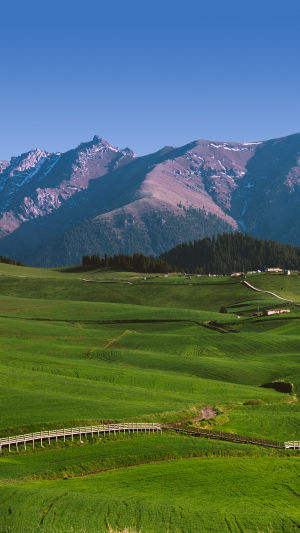Grasslands are one of the earth's most important ecosystems, divided into tropical and temperate grasslands. They are the most widely distributed vegetation type on the earth, covering 40.5% of the global land area (excluding Greenland and Antarctica).
Grasslands are mainly distributed in the middle of forests and deserts and are unevenly distributed across continents. Africa, Asia, Latin America, and Oceania have a larger proportion, while Europe has the smallest.
The formation of grasslands is due to thin soil layers or low precipitation, which makes herbaceous plants less affected. The natural grasslands occur in environments where growing conditions are only favorable for a brief season.
In the tropics, this growing season is usually the rainy season, while in temperate grasslands, it's usually a short period between wet and cold winters and dry and hot summers.
Grassland ecology is determined by geographical and climatic conditions, and ecosystems mainly include plants, migrating wild animals, humans, and domesticated livestock. Grassland is one of the largest carbon storage pools on the earth, accounting for 33%-34% of the total organic carbon on the earth.
However, it is currently the most seriously affected area by human activities. The grassland ecosystem plays an extremely important role in maintaining global and regional ecological balance.
Here are some countries with large grassland areas in the world:
Canada
Canada is the largest prairie country in the world, with a prairie area of about 2.8 million square kilometers, mainly distributed in the western prairie zone. The country's grasslands are part of the North American prairies and are important areas for livestock farming and wildlife conservation.
The United States
The United States is the second largest prairie country in the world, with a grassland area of about 2.6 million square kilometers, mainly distributed in the Great Plains in the Midwest and the Basin in the West. America's prairie resources have a major impact on the country's livestock and oil industries.
Australia
Australia is the third largest grassland country in the world, with a grassland area of about 2 million square kilometers, mainly distributed in the inland areas of the country. Australia's grassland resources have an important impact on the country's livestock industry and wildlife conservation.
Argentina
Argentina is the fourth largest grassland country in the world, with a grassland area of about 1.8 million square kilometers, mainly distributed in the southern Plata River Basin. The country's grasslands, which form part of the Pampa, are an important resource for the country's livestock and tourism industries.
Colombia
Colombia is the fifth largest grassland country in the world, with a grassland area of about 1.6 million square kilometers, mainly distributed in the Llanos Prairie on the east side of the Andes Mountains.
India
India is the sixth largest grassland country in the world, with a grassland area of about 1.3 million square kilometers, mainly distributed in the central part of the country. India's grassland resources have an important impact on the country's animal husbandry and agriculture.
Morocco
Morocco is the seventh largest grassland country in the world, with a grassland area of about 1.1 million square kilometers, mainly distributed in the central and western regions of the country. Morocco's grassland resources have an important impact on the country's animal husbandry and tourism.
Mexico
Mexico is the eighth largest grassland country in the world, with a grassland area of about 1 million square kilometers, mainly distributed in the northern part of the country.
Grasslands are a crucial ecosystem on our planet, playing an important role in maintaining global and regional ecological balance. Despite their significance, grasslands are also the most affected areas by human activities. Therefore, it's vital to protect and conserve these valuable ecosystems.





